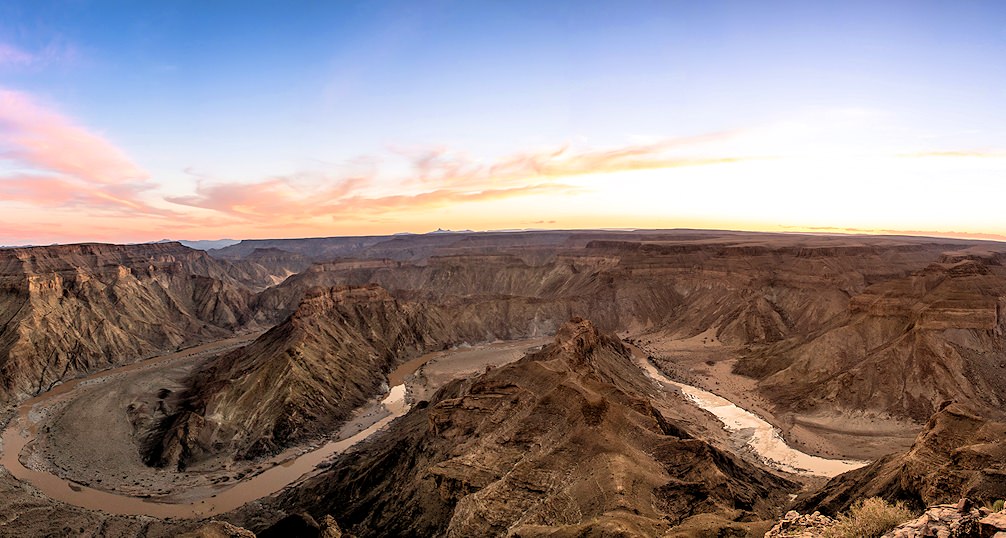-
Destinations

Top Destinations
Countries in Southern Africa
-
Our Private Tours

-
Safari Experiences

Popular Types
Safaris by Country
- Find a Trip
- About Us
- Start Planning
-

Experience the wonder of nature on foot.
Experienced rangers lead walking safaris with intimate knowledge of the environment and animal behavior. They are armed to ensure safe encounters with the wildlife of Africa.
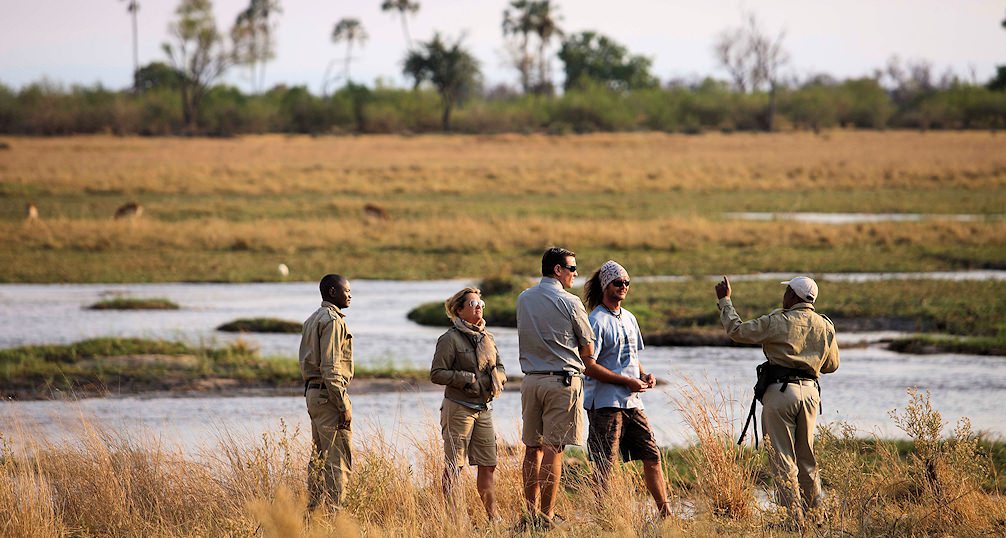
Whether it is your own neighborhood, a sandy beach, open fields, mountain pathways or the wild African bush, to truly experience an area, you should explore it on foot, Nothing heightens the senses more than hiking through an area with dangerous game. Every little sound is amplified, and not the smallest movement overlooked. The size of animals, especially the large ones, is put into perspective, as they appear much larger than they would from the distance of a vehicle. Beyond the wilderness, towards the coast, you will find few things more relaxing than walking along a sandy beach with the wind in your hair, your feet sinking into the sand alongside the rhythmic push-and-pull of the ocean with the beat of a tidal metronome.
Southern Africa is host to an astonishing amount of hiking trails, from day hikes to weekend routes, five-day hikes and longer trails for those that take their hiking seriously.
There is also the opportunity to walk the same paths that our early ancestors traced, and to marvel at the signs that they left us in the form of rock art. The rock art exists in the form of paintings and engravings made by San Bushmen, offering a glimpse of what activities have taken place in a certain area for thousands of years.
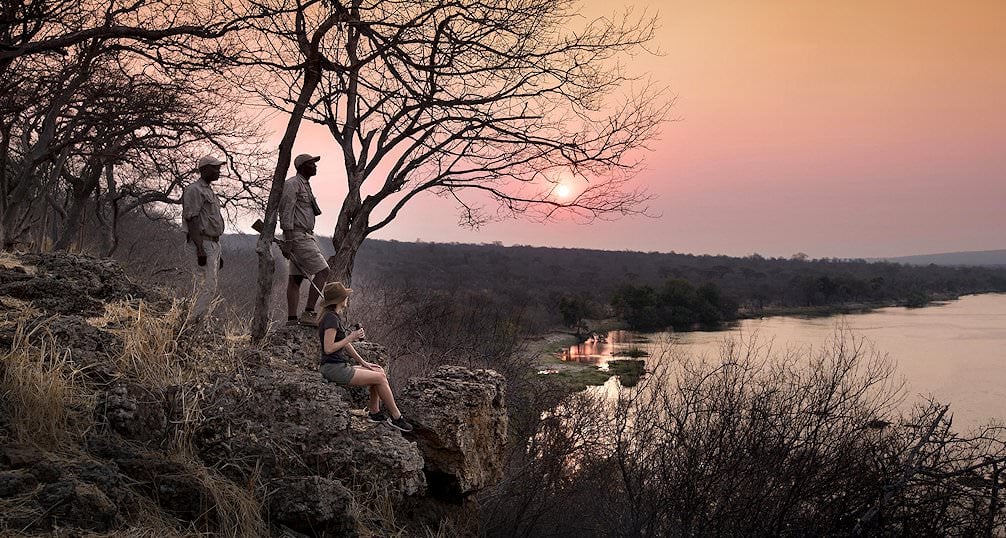
The walking safari was pioneered by Norman Carr in 1950 when he was a ranger in the Luangwa River Valley. At the time, safaris were based around hunting, but Norman Carr started the more modern version of safaris where animals are only shot with a camera. As the Luangwa River Valley had particularly high concentrations of animals, there was no need to venture out in a vehicle to observe game. This is how he started conducting guided wildlife hikes.
Nowadays, there is hardly a Big Five reserve or park that doesn’t offer guided hikes, also referred to as ‘bush walks’ or ‘walking safaris’. There are hundreds of camps offering walking safaris in South Africa, with the highest concentration being in the Greater Kruger area. The most sought-after location for a walking safari is still at its birthplace - South Luangwa National Park. During a walking safari, an experienced, armed guide leads the hike in search of wildlife. Before the adventure even begins, the guide will thoroughly brief all participants on animal behavior and explain how dangerous animal encounters should be handled. The golden rule? “Don’t run!” In theory, this sounds easy, but it is not always the case when you find yourself in the midst of a standoff with a five-ton elephant or a pride of lions.
The primal adrenalin rush caused by a dangerous game sighting is second to none. It is the guide’s responsibility to prevent guests from giving in to the natural “fight-or-flight” instinct, and calmly handle to situation. The guide’s rifle is truly for ‘worst case’ scenarios, and is intended to scare the animals away rather than to injure them. As soon as the animal realizes that the people are not prey or a threat, it will typically return to ‘business as usual’.
Walking safaris are not only about encountering animals - It can mean much more to the avid nature lover. Experiencing the African wilderness on foot allows for a much closer look at surroundings. Animal tracks tell a story of what occurred in an area over the previous couple of hours, or even days. Delightful details emerge from the smallest flower or plant. The curious habits of insects are observed first-hand. The bush comes alive with a plethora of sights, scents and sounds, pushing human senses as far as they can go. All these aspects of a walking safari piece together the holistic picture of the ecology in a specific area.
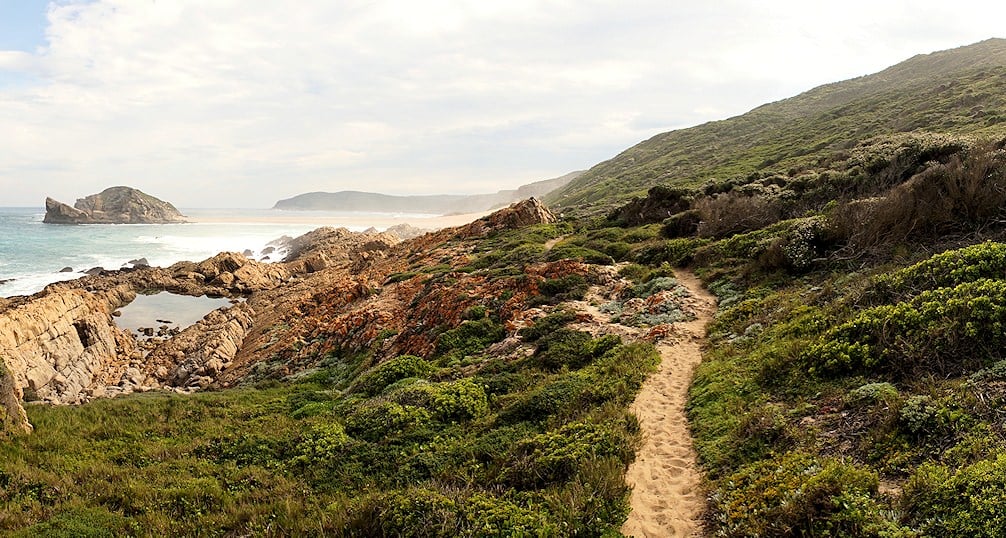
Hiking trails are plentiful in Southern Africa. A wide variety of habitats enable hikers to walk in every imaginable environment, from harsh deserts to lush forests, long sandy beaches to high mountain tops. Moreover, a hike does not have to be long to be pleasurable. Even on the edge of a city like Cape Town, a hike up Table Mountain, Lion’s Head or Devil’s Peak is a thoroughly enjoyable venture and only takes a couple of hours.
There are short hikes in almost every town in South Africa. In the Garden Route, for example, you will find the Oystercatcher Trail near Mossel Bay. The trail hugs the coastal escarpment between lush fynbos and the temperate waters of the Indian Ocean. Birdlife is plentiful amongst the fynbos, and the ocean bustles with life.
The Oystercatcher Trail offers ideal vantage points to spot whales in season, as southern right whales use the area as a nursing ground for their young. Dolphins can be spotted year-round, and even orcas - also known as ‘killer whales’ - have been seen by a lucky few.
Nimble-footed ‘dassies’ or rock hyrax inhabit the cracks of the cliffs that the hike follows, and frequently entertain hikers with their antics. This is only one of hundreds of short hiking trails. Another appeal is that these hikes are completely free of charge, save for the transport to get there and for a guide (if you prefer it).
For more serious hikers, numerous longer hikes crisscross the subcontinent as well. Inside the Kruger National Park you will find various multi-day trails. Most of these hikes are two-day, three-night experiences that start on a Wednesday afternoon and end on a Saturday morning, or start on a Sunday afternoon and conclude on a Wednesday morning. These ‘Wilderness Trails’ consist of the Wolhuter Trail, Sweni Trail, Olifants Trail, Nyalaland Trail, Napi Trail, Mathikithi Trail and the Bushman Trail. Each trail has its own unique attributes. The trails that pass through granite hills boast many rock art sites, and signs of Stone Age and Iron Age anthropogenic activity. The Kruger Park consists of magnificent river valleys teeming with hippopotamuses and crocodiles, open savanna home to a wealth of antelope species, varied vegetation host to a spectacular array of birds, breathtaking landscapes and an abundance of large game such as rhinoceros, elephant and buffalo. All these factors make it a sough-after hiking destination.
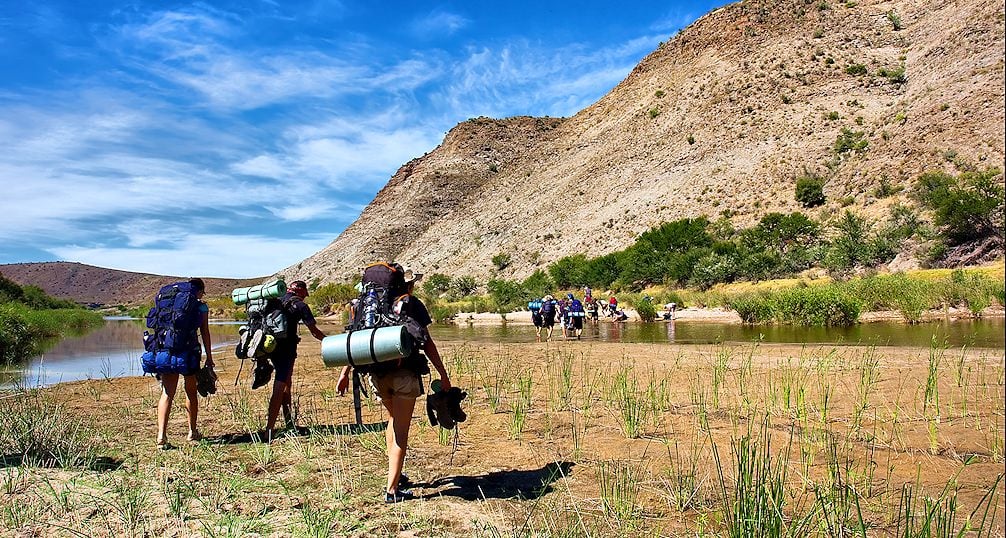
It is hard to single out what the best hiking trails in Southern Africa are, but a few exceptional hikes have become world-renowned. These trails include The Otter, The Fish River Canyon and The Whale Trail, to name a few. The five-day Otter Trail and the Whale Trail both trace the southern coast of South Africa, but that is where the similarities end. The Otter Trail is a mixture of indigenous forest, rocky clifftops and a multitude of rivers that need to be crossed. The overnight huts on the Otter Trail offer only the bare necessities, and luxuries such as hot water and electricity are not available. This, however, doesn’t make the trail less desirable. In fact, it is consistently rated as the top hiking trail in South Africa, and has been providing hikers with unforgettable experiences since its inception in 1968. The Whale Trail offers hiking at a most luxurious level, as you’ll only need to carry a small backpack on your shoulders. Your luggage is transported for you between luxury accommodations along the trail. The cottages that hikers overnight in feature warm water, flush toilets, en suite bathrooms, comfy beds and fully equipped kitchens. The vegetation of the Whale Trail consists of fynbos and breathtaking views of the ocean all along the way.
The Fish River Canyon in southern Namibia offers hiking in its purest form. The hike follows the world’s second-largest canyon for 50 miles and provides awe-inspiring scenery, consisting of sheer canyon walls littered with boulders.
No shelter is provided along the way. Your nights are spent either within the tent you’ve carried on your back all day or under the starry night sky. On the second day of the hike, you’ll end at a hot water spring area known as Palm Springs – a highlight of the hike! The hot sulfur spring provides a unique experience, with a hot water pool to sooth aching muscles.
